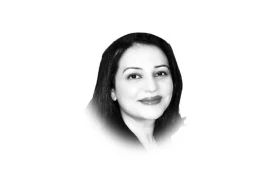
The attitude towards private banks is usually of doing customers a favour by keeping their money safe and extending loans. It’s actually equally, if not entirely, the other way round. Customers do the initial favour of depositing their money which the bank lends out many times over, in many times its value, by a unique banking sleight of hand that nobody questions. In a transparent public bank, operated within limits, it becomes a boon for borrowers.
What is a public bank? It works the same way as a private bank, except that its owners are the people, whether of a city, province or entire country and are represented by government bodies, not private individuals or companies. Because a public bank does not have to make profits for shareholders their priority, they can focus on serving their customers more economically and at lower interest rates.
What users need to understand is that money and banking are mechanisms to facilitate buying and selling, paying bills for services as well as investments, instalment payments, and so on. What money does is to bring labour, materials and creativity or business acumen together to reap beneficial and profitable results. So it is more of a very basic service industry than anything else. Since most citizens are involved in economic activity and need such a facility, there should be a public bank to which all citizens have equal access as a right, not just the moneyed or privileged.
As Dr Michael Hudson, Professor of Economics at the University of Missouri explains, a public bank should be like a public utility “the demand isn’t simply to make a public bank but to treat the banks generally as a public utility, just as you treat electric companies or health care as a public utility ... There should be a government bank that offers credit card rates without punitive 30 per cent interest rates … This is how America got strong in the 19th and early 20th century …”
Equal rights include the right to credit. Some may feel this means forcibly using the money of those who have earned it legitimately, for others. Not really. Most money — anywhere up to 99 per cent — is new, created by banks (which are authorised to do so) in the act of lending. When they lend, they are providing the borrower spending power for his particular need. Yet, most money is just numbers backed by nothing. But their use as a measure and their allocation and juggling are vital — and probably indispensable — to all economic activity, minor or major. However, a high degree of honesty and transparency are also essentials.
After all the scandals surrounding US banks, it became obvious that the US was not a citadel of public interest banking. There is a single exception though — the Bank of North Dakota. If any financial institution has put all other American banks to shame, it is this. Like the German public banks, it restricts its operations to the people of its own state. North Dakota’s money and banking reserves stay within and are invested within the state.
In 1919, the US state of North Dakota faced a crisis similar to what the rest of America is facing today. To resolve the crisis, the public Bank of North Dakota was created. Today, it is the only one of USA’s 50 states that has been completely untouched by events. Since the financial crash of 2008, it has enjoyed a continuous budget surplus and sought ways to spend its surplus! It not only reduced individual income taxes and property taxes, it was the only state creating new jobs while other states were losing them.
The bank is known for its “participation loans” — joining with smaller banks to compete with larger banks. In this, the community bank initiates and takes responsibility for the loan while the North Dakota Bank contributes money and shares in the risk and profits. It is equally known for its low-interest loans to students, farmers and businesses of all kinds.
A common argument is that banking should be left to the bankers because they are the experts. But we know what happened to the West when they did just that without regulation and oversight. Besides, everyday banking affecting customers is not all that complicated and it’s essential to know enough to discourage anyone taking one for a ride.
A widespread myth is that the bigger the bank, the more efficient it is, costing customers less for services (economies of scale). The truth is the diseconomies set in faster in banks. More personnel and infrastructure for more and complex transactions mean higher costs. Surveys in America have found that private banks extract between 20 to 50 per cent for even the most trivial matters, mostly through hidden charges. Money numbers are a double-edged sword; they can empower but can also mislead and ruin. And the biggest US financial institutions that gutted America are about 300 times the size of the average ‘small’ banks.
The reason why Germany and Japan shot to the top in net exports (while US trails at the bottom of the global list) was because their companies were given easy access to affordable loans from public or cooperatively-owned banks. Even when collaborating with private capital, countries such as Brazil, Russia and India tend to keep a 51 per cent government control over public banks. One of the reasons why most of Pakistan’s millions of artisans and self-made mechanics with high engineering skills have not got ahead was due to the absence of credit on fair terms, something the government could have easily extended. Instead, most banks, private or state, choose who they will endow them with and who they will not. Until the political mentality changes to accord all citizens equal credit as a sharing means of the country’s resources and a part of equal rights, Pakistan will remain a dependant and constantly manipulated country.
Published in The Express Tribune, September 19th, 2012.
COMMENTS (19)
Comments are moderated and generally will be posted if they are on-topic and not abusive.
For more information, please see our Comments FAQ


1731550446-0/Polymarket-(1)1731550446-0-165x106.webp)

1729512368-0/liam-(8)1729512368-0-165x106.webp)







It is just not the greediness of the banks but of the public as well. Everybody wants more return on their money which means higher deposit rates which can only be provided if the bank is in turn lending at a higher rate which means they will be investing in riskier assets (basic paradigm of high risk results in high rewards). The financial crisis is a monster created by us all so please stop blaming the banks.
How could you guys publish this?
Have you ever visited National Bank of Pakistan? Do give a visit and I bet this article will be reverted back! Peace
Agree with you that the banking system in general sucks but give me, the average guy, a secure alternative and no, keeping my money under the sugar pot at the back of the kitchen cabinet it not a good idea.
I will make it more simple. Banks make money by:
Fractional Reserve System Interest Printing Fiat Money Controlling Money Supply
what was this?
What is with the commenters? Please point out what you find wrong or over-simplified instead of making over-simplified comments yourself. How can you pretend to know more when you have nothing to say?
I had a point. Falcon already made it (in a very sensible fashion). But, yes, any government-run institution especially in Pakistan will develop some warped incentives that it responds to in place of the profit motive. I say the profit motive is at least plain and straightforward. Incentives that we understand should be easier to mold through regulation than some confusing cocktail of political economy incentives.
Would urge the author to look at credit unions to fully understand the US banking system. . The US has one state-owned bank (two including a bank in Puerto Rico) but it has numerous credit unions that give excellent interest rates on deposits and low interest student, auto and home loans. The credit unions are run by the members (are not nationalized or belong to the state) and have weathered most crises well.
Wow, banking is so simple isn't it? What a clueless op-ed!
@AJ: I am allowed to recommend only once.
The author need to understand that banking like any other business has to operate so that institution makes profit as well. The reason why North Dakota bank did not go through the meltdown that some other banks in US did was because they followed the capital adequacy requirement properly and did not play around with fancy products. Yes the deposit of the customers is used for lending but it cannot be many times over. In fact, it is a percentage of deposits held by the banks and is always less than 100%. The reason why certain banks give higher rates on deposit and certain charge higher interest rates on lending has to do with a) central bank interest rate, b) the lending risk and c) operational costs. In Pakistan no banks offer any fancy products and to be honest the deposit rates for all the banks are more or less same give or take 0.10-0.15%. In lending, some banks are transparent about their rates and some have charges built in that are their on the document they sign but are not so transparent. As an example look at auto loan rates of the bank, some appear to be lower but the monthly payment of each is only Rs. 100-300 different. The choice is always customers. Yes banks make money off you and me, but then tell me what do you get in life at the cost of production?
A rather oversimplification of the banking sector... not quite sure if the author understands the subject that she has chosen to write on...
Writer has a ahaa moment after reading monetary policy in economics 101.
Wow congrats.
Now tell us how bulb works.
To your last paragraph, growth in Japanese exports backed by cheap credit was the cause of their initial success and also one of the causes of their problems later because credit grant process became heavily politicized over a period of time specially because of dealing with too big to fail type industry formations (also called Keiretsu); as a result, banks ended up incurring significant losses due to very high default rates on these non-performing loans. And that is precisely the problem with all govt. managed enterprises, they are fraught with political meddling making them inefficient, which is also the case in China and Russia.
"Because a public bank does not have to make profits for shareholders their priority, they can focus on serving their customers more economically and at lower interest rates." " Yet, most money is just numbers backed by nothing. " "However, a high degree of honesty and transparency are also essentials." Lady, I am not sure you have even an inkling of what you are talking about.